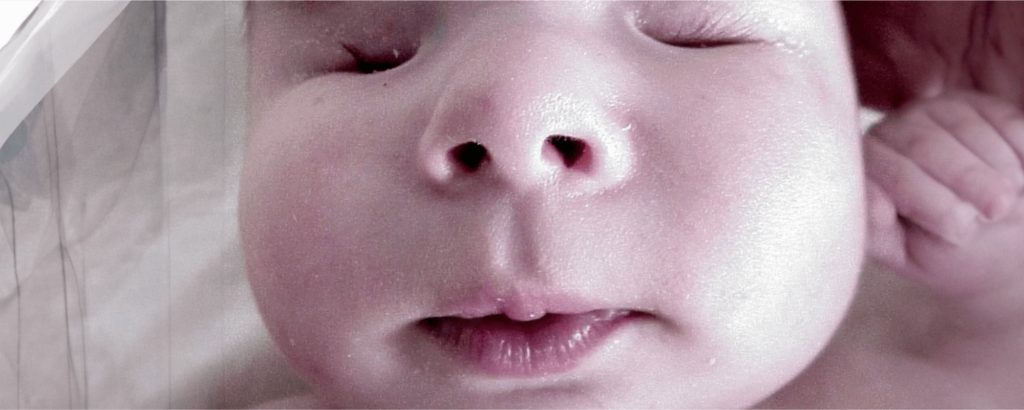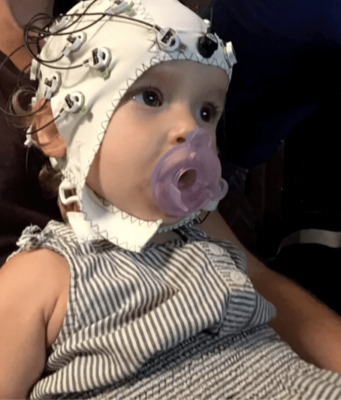Anophthalmia is a rare congenital disorder where a baby is born without one or both eyes. It affects about 1 in every 100,000 births globally. This condition can occur independently or with other developmental abnormalities, indicating complicated genetic causes. Due to its rarity, only 33 cases of this condition have been documented worldwide.
What is Anophthalmia? 1
Anophthalmia, derived from the Greek words “an,” meaning without, and “ophthalmos,” meaning eye, is a condition where the eye sockets fail to develop properly during embryonic growth, resulting in the absence of one or both eyes. This condition can occur unilaterally (affecting one eye) or bilaterally (affecting both eyes). In severe cases, the eyeballs are absent, and the surrounding ocular structures, such as the eyelids, eyelashes, and tear ducts, may also be underdeveloped or absent.
Causes and Genetic Basis 1
Anophthalmia can arise from genetic and environmental factors, although the exact cause remains unknown in many cases. Some known genetic causes include gene mutations in eye development, such as the SOX2, OTX2, and PAX6 genes. These genes play crucial roles in early embryonic eye development, regulating processes like eye field specification, optic vesicle formation, and patterning of ocular tissues. Mutations in these genes disrupt normal eye development, leading to anophthalmia.
Diagnosis and Prenatal Screening 1
Anophthalmia is typically diagnosed shortly after birth based on physical examination and imaging studies such as ultrasound or MRI. Prenatal screening for anophthalmia can be challenging, as it may not always be detectable during routine prenatal ultrasound scans. However, advanced imaging techniques such as 3D ultrasound and fetal MRI may provide more detailed visualization of fetal anatomy, allowing for early structural abnormalities, including anophthalmia detection.
Management and Treatment 1
While anophthalmia cannot be reversed, early intervention and multidisciplinary care are essential to address associated complications and support optimal development. Treatment options may include prosthetic eyes or orbital implants to improve cosmetic appearance and promote socket expansion. Additionally, surgical procedures such as socket and eyelid reconstruction may be performed to enhance eyelid function and facilitate prosthesis retention.
Psychological and Social Considerations 1
Living with anophthalmia can pose unique challenges for affected individuals and their families, both psychologically and socially. Coping with the physical appearance differences and adjusting to visual impairment require ongoing support and counseling. Access to specialized educational and rehabilitation services can help individuals with anophthalmia achieve their full potential and navigate daily activities effectively.
Recent Case: Baby Born in Missouri, US 2

A recent case of a baby born with anophthalmia in Missouri, US, has brought attention to this rare condition. The baby, born without eyes, was diagnosed shortly after birth, prompting medical professionals to provide comprehensive care and support to the family. The case highlights the importance of early diagnosis, access to specialized medical care, and the need for increased awareness and understanding of anophthalmia within communities.
Research and Future Directions 1
Advancements in genetics and developmental biology have shed light on the molecular mechanisms underlying anophthalmia, paving the way for potential targeted therapies and genetic counseling services. Collaborative efforts between researchers, clinicians, and advocacy groups are essential to unravel the complexities of anophthalmia further and develop innovative approaches for diagnosis, treatment, and support.
Conclusion 1
Anophthalmia is a rare genetic disorder that presents significant challenges for affected individuals and families. While the condition cannot be cured, early diagnosis, comprehensive medical care, and psychosocial support are crucial in optimizing outcomes and quality of life. Continued research efforts aimed at understanding the genetic basis of anophthalmia hold promise for future advancements in prevention, treatment, and support services for individuals affected by this condition.
In conclusion, raising awareness about anophthalmia is essential to promote early detection, improve access to specialized care, and foster greater understanding and acceptance within communities. Through collaborative efforts and ongoing research, we can strive towards better outcomes and quality of life for individuals born with this rare genetic disorder.
References
- Anophthalmia – EyeWiki [Internet]. eyewiki.aao.org. Available from: https://eyewiki.aao.org/Anophthalmia
- Shocking! Baby Born Without Eyes Due to An Extremely Rare Genetic Disorder [Internet]. TimesNow. 2024 [cited 2024 Feb 14]. Available from: https://www.timesnownews.com/health/shocking-baby-born-without-eyes-due-to-an-extremely-rare-genetic-disorder-article-107523879
About Docquity
If you need more confidence and insights to boost careers in healthcare, expanding the network to other healthcare professionals to practice peer-to-peer learning might be the answer. One way to do it is by joining a social platform for healthcare professionals, such as Docquity.
Docquity is an AI-based state-of-the-art private & secure continual learning network of verified doctors, bringing you real-time knowledge from thousands of doctors worldwide. Today, Docquity has over 400,000 doctors spread across six countries in Asia. Meet experts and trusted peers across Asia where you can safely discuss clinical cases, get up-to-date insights from webinars and research journals, and earn CME/CPD credits through certified courses from Docquity Academy. All with the ease of a mobile app available on Android & iOS platforms!







